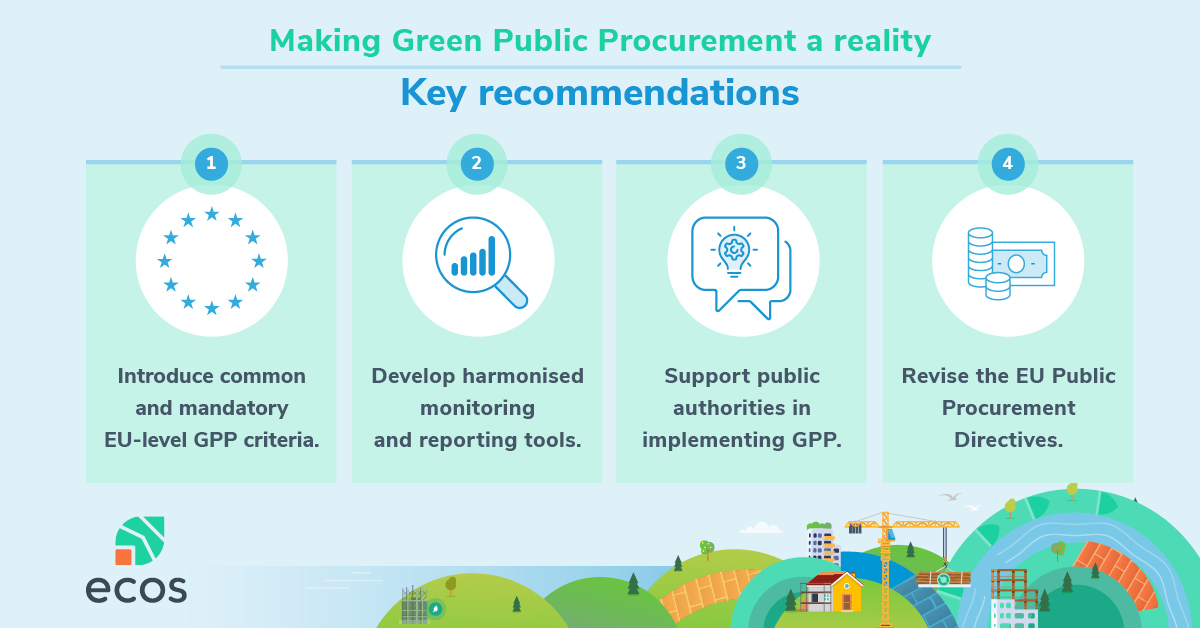Look back on our Annual Conference 2024: Building blocks for the future
From how construction products are designed and how their environmental information is disclosed to the way public purchasing decisions are made, pathways to sustainable construction are within reach. Yet, they remain underexploited. This year – against the background of renewed institutions and bringing together key stakeholders from industry, civil society, and policymakers - the 14th edition of our annual conference focused on key leverages to implementing ambitious construction policies and standards in the EU.
Bringing down construction’s environmental impact is critical for the EU to meet its climate goals. Construction materials – such as cement and steel – are among the major contributors to climate change and environmental pollution with an annual carbon footprint of 250 million tonnes – in the EU alone. Most of these impacts are embodied in materials, meaning they occur throughout a product’s entire lifecycle – from extraction of materials to end of life.
Over the past couple of years, the EU has progressed in setting up a framework for environmental requirements for construction materials and buildings, in the Construction Products Regulation and the Energy Performance of Buildings Directive, respectively. But it is now down to implementation to truly set this highly polluting sector on track to decarbonisation – and doing so successfully will require tapping into missing levers in policies and standards.
Panel 1 | How to unlock the decarbonisation of construction? Focus on the missing building blocks in policies and standards
Valentina Bisinella, ROCKWOOL Group – Susan McGarry, Ecocem Global – Philippe Moseley, DG GROW – Joren Verschaeve, ECOS

Our first panel centred on incomplete or missing tools in implementing policies and standards to support the sector’s transition against the background of a new policy cycle in a changing international landscape. Developing an ecodesign framework to push the worst-performing materials off the market, bringing down competition barriers for truly green products, and focusing on creating leading markets through green procurement are some of the measures the sector critically needs to decarbonise.
Key takeaways
- Technology-neutral cement and concrete standards are needed to level the playing field. Current standards favour traditional, carbon-intensive formulations, making it difficult for innovative low-carbon solutions to gain market entry.
- Comprehensive data from construction materials is essential to ensure effective building-level decarbonisation. With a new requirement to disclose emissions from new buildings, a revision of core rules underpinning environmental disclosure, such as Environmental Product Regulations, is needed to ensure data is accurate and transparent.
- The upcoming Clean Industrial Deal must combine push mechanisms, like technology-neutral standards, with pull mechanisms, such as green public procurement, to drive innovation and investment. Delaying the phase-out of free allowances for high-polluting materials undermines the business case for change.
Report launch | Buy better to build better: Driving public purchase towards truly green construction products
Tudor Cherhat, ECOS – Xavier Le Den, Ramboll
Download report
 During the afternoon, we zoomed in on one of the EU’s most important but underused economic tools: green public procurement. Public procurement accounts for 15% of the EU’s GDP but fewer than half of public contracts are awarded with the environment in mind!
During the afternoon, we zoomed in on one of the EU’s most important but underused economic tools: green public procurement. Public procurement accounts for 15% of the EU’s GDP but fewer than half of public contracts are awarded with the environment in mind!
Our report – based on an external study we commissioned – clearly shows that introducing ambitious requirements for concrete and steel can nearly half these sectors’ emissions. Green public procurement is also cost-effective. When free allowances will no longer allow the highest-polluting companies to avoid paying for their emissions, producing low-carbon products would inherently become the cheapest option.
Panel 2 | Paving the road for mandatory green public procurement criteria
Liesbeth Casier, International Institute for Sustainable Development – Claire Heidmann, French Ministry for Ecological Transition – Helena O’Rourke-Potocki, ICLEI Europe – Federica Pozzi, ECOS
Despite the green and economic potential, only a handful of Member States have green public procurement policies in place. Following the launch of our report, panellists from civil society, national authorities, and local governments discussed how to make green public procurement standard practice rather than a seldom-used option.
Key takeaways
- The EU has everything needed to create lead markets for low-carbon construction materials. Both the new Construction Products Regulation and Ecodesign for Sustainable Products Regulations are an opportunity to define criteria for green products, simplifying and supporting procurers in making green purchases.

- The current EU public procurement framework falls short of addressing strategic priorities such as sustainability, social aspects, and economic competitiveness. While sectors like construction are beginning to lead the way in mainstreaming green procurement practices, the Public Procurement Directives must align procurement practices across sectors to achieve long-term value for money and strategic policy goals.
- Examples from across Europe demonstrate the potential for green public procurement to drive change, if scaled up with a comprehensive EU framework. Take France, for instance, which doubled its green procurement uptake by embedding environmental considerations into its national procurement strategy.
The EU should be leading the way to sustainable construction – ECOS recommendations
Buying better to build better is a European affair. Faced with a changing international landscape, the EU has to ensure its transition to a greener economy is a structural one that starts at reverting a large share of its GDP – spent on procuring schools, bridges, and hospitals – in favour of green materials and buildings.


 By
By  By
By 
